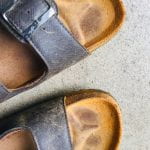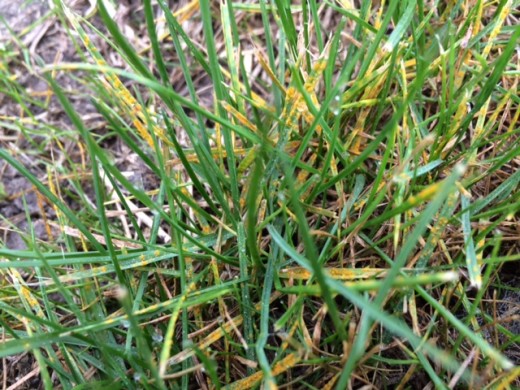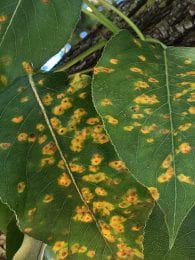 By: Judy O’Mara
By: Judy O’Mara
If you drive around town you will notice that most ornamental pear trees have orange leaf spots. It can look pretty dramatic. This is a fungal disease called pear rust (Gymnosporangium globosum). It is part of the complicated group of cedar rust diseases that are common in Kansas which cycle back and forth between cedar trees and their alternate host (in this case pear trees). By the time you see the symptoms it is too late to manage the disease. Preventive fungicides can be applied in the spring during the months of April and May.
A nice fact sheet on this disease can be found at: https://hnr.k-state.edu/extension/info-center/common-pest-problems/common-pest-problem-new/Pear%20Rust.pdf
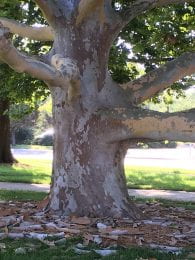 I look forward to the annual exploding London plane trees (and sycamore) on the K-State campus. Sometime during early to mid-July the outer bark slips off the tree…explosively. Bark pieces can wind up 20 feet away. The first time I saw this interesting event (30 yrs ago), I was worried that the tree was going to die. I’ve since learned that this is just a normal growth habit of the tree.
I look forward to the annual exploding London plane trees (and sycamore) on the K-State campus. Sometime during early to mid-July the outer bark slips off the tree…explosively. Bark pieces can wind up 20 feet away. The first time I saw this interesting event (30 yrs ago), I was worried that the tree was going to die. I’ve since learned that this is just a normal growth habit of the tree.
My colleague and I were walking through a landscape this week and she saw this long, tan linear symptom on some hosta leaves. We both knew immediately what it was caused by…Hosta Foliar Nematodes. The nematodes in the tan narrow lesions are limited by the veins, so symptoms are long and blocky. This disease requires really wet conditions to thrive and spread.

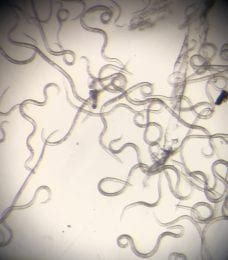
Here are some interesting facts about foliar nematodes. They are microscopic roundworms and can survive on leaf tissue or in the soil. They can complete their life cycle in 2-4 weeks. The nematode has the ability to survive in a dormant state as a fourth stage juvenile for up to two years. Spread of foliar nematodes is by infected leaves touching other wet leaves. The disease is unattractive but rarely kills the plant. Sanitation of infected plants will help to clean up the problem
Missouri has a nice article on Hosta Foliar Nematodes: www.missouribotanicalgarden.org/gardens-gardening/your-garden/help-for-the-home-gardener/advice-tips-resources/pests-and-problems/diseases/nematodes/hosta-leaf-nematodes.aspx


